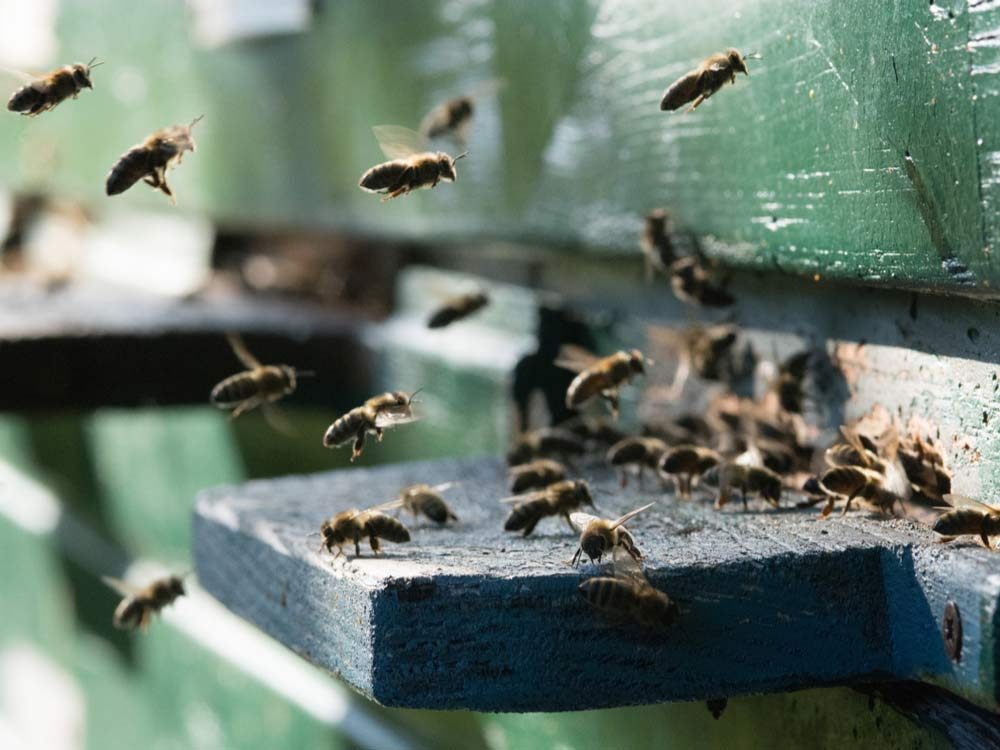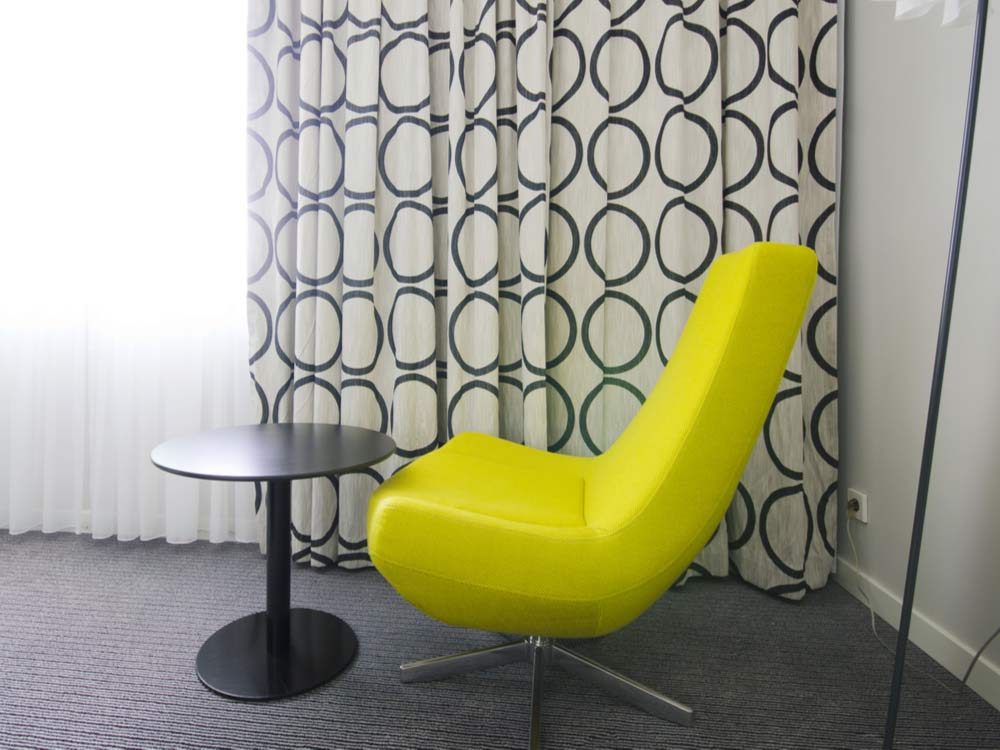
A Greener Wash
Environment Washing machines are heavy. That’s because there’s an average of 25kg of concrete inside them to stop them moving around when they’re on a spin cycle. And that means they’re not only difficult to move around in your home, they also cost a lot—in both fuel and carbon emissions—to transport.
But all this could be about to change thanks to a brilliantly simple invention by a team at the UK’s Nottingham Trent University.
Professor Amin Al-Habaibeh and undergraduate Dylan Knight hit on the idea of replacing some of the concrete with a sealable plastic container that can be filled with water once the machine is in place. By doing this, the weight of a machine can be cut by a third. In the UK alone, this could mean a saving of around 45,000 tonnes of carbon dioxide emissions a year when the machines are transported.
“Everyone thinks the idea must have been thought of before,” says Dylan Knight, 22. “No one can really believe it. But it definitely works.”
Stockholm’s Electric Bikes
Transport Stockholm’s long-running public bike-share scheme is getting a hi-tech update. The current 1,200 standard bikes will be replaced by 5,000 hybrid electric models. It’s believed to be the world’s first hybrid bike-share scheme, and will allow users to travel longer distances than they might have done before.
“When you register, you are given a small battery which you can charge at home,” says Daniel Helldén, the city’s vice-mayor of traffic. “If you don’t want to use the battery, you just use the bikes like a normal bike, but if you want an electric one, you connect the battery, which is included in the normal season ticket price.”
Meanwhile, in Rome, where a bike-sharing scheme failed partly because of the city’s hilly topography, the city council has unveiled a fleet of zero-emission scooters in a new rental scheme.
Masterpieces at the Airport
Culture Passengers at Amsterdam’s Schiphol airport can now get a taste of the Netherlands’ artistic heritage without leaving the terminal. A new exhibition space courtesy of the city’s Rijksmuseum displays original works by painters from the Dutch Golden Age such as Jan van Goyen, Willem van de Velde the Younger and Abraham Mignon. The show is free and is located in Schiphol’s renovated Holland Boulevard leisure zone.

Pensioner Saves Coach Party From Plunge
Heroes The 43 tourists traveling by coach over the Austrian Alps were enjoying the view when suddenly potential catastrophe struck. The driver fell ill and collapsed into the aisle—and the coach began heading straight toward a 100-meter deep ravine.
French pensioner Gilbert Sand, 65, didn’t think twice. The retired forest ranger leaped from his front-row seat and jammed his foot on the brake pedal. In doing so, he fractured his tibia, but saved the coach party. He had acted just in time. “According to the experts, another 20cm and the coach would have toppled over the edge,” says Sand.
“It was a hair’s breadth from catastrophe,” says a police spokesman. Sand is very modest about what he did: “I didn’t think about it. I just acted instinctively.”
Sources: Environment: NTU, 4.8.17. Transport: The Local (Sweden), 27.9.17; The Local (Italy), 28.4.17. Culture: Lonely Planet, 8.9.17. Heroes, The Local (France), 24.9.17

Got a minute? That’s all it could take to live a happier life!
We already know that gratitude can help us sleep better, lower stress levels, and offer these other benefits. Now researchers are measuring just how much happier it can make you and how much effort it takes to get that bump.
“Clinical trials indicate that the practice of gratitude can have dramatic and lasting effects in a person’s life,” Robert A. Emmons, professor of psychology at UC Davis, told NBC Today. In a study published in the Journal of Personality and Social Psychology, Emmons found that when people kept a gratitude journal, they were happier. So much happier, in fact, after a month of daily journaling, they showed a 10 per cent increase on subjective happiness—that’s the same jump in happiness you’d expect if you doubled your income.
In this study, researchers asked subjects to simply record events of their day in a journal. One group of participants was told to make a list of how their life was better than most. What the study found was that participants in the gratitude group reported much higher levels of satisfaction with their lives than the control group. They felt more optimistic about the upcoming week and more connected with others.
“It appears that participation in the gratitude condition led to substantial and consistent improvements in people’s assessments of the global well-being,” the study noted.
Ready to start your own gratitude journal? The good news is that it doesn’t have to take a lot of time or effort. It can be as simple as opening a specifically designated gratitude notebook and taking 60 seconds to list three to five things you’re grateful for that happened that day or the day before.
You can make it part of your morning routine as you sip your coffee or your bedtime ritual as you wind down for bed. Keep it simple and write down the first thoughts that come up; even one word or a short phrase is enough—it could be anything from a beautiful sunset to a tasty meal to a yoga class or favourite TV show. Over time, you might find yourself getting more detailed and wanting to spend more time on journaling.
Believe it or not, there’s scientific evidence These 8 Smells Can Make You a Happier Person!

Is This Your Personality Type?
You’ve most likely had to take a Myers-Briggs Type Indicator test at some point in your life. If you haven’t, here’s a quick summary: The test measures which side you lean more towards in four different areas: Extroversion vs. Introversion, Sensing vs. Intuition, Thinking vs. Feeling, and Judging vs. Perceiving. (Find out what your favourite type of music can predict about your personality.)
After you take the test, don’t be surprised if you’re oddly freaked out by how accurate your results are. If you happened to fall into the INFJ personality type, you’re a rare breed; only 1.5 percent of the general population fits into that category, making it the rarest personality type in the world. (This is the rarest hair and eye colour combination in humans.)
According to the Myers-Briggs Type Indicator test, the INFJ personality is more introverted, intuitive, feeling, and judging. In other words, they’re a bit more reserved, but they’re very loyal friends and make strong, empathetic leaders. (Check out the 13 telling things your handwriting reveals about your personality.)
On the other end of the scale, the most popular type of personality is ISFJ. If you’re curious about your personality type, take the Myers-Briggs Type Indicator test for yourself.
Plus: 10 Dream Vacations and What They Reveal About Your Personality

This is the drink experts say you should always order on a plane
There are so many plane-related health risks that it’s hard to keep track of them all. Not only would the bacteria on your tray table make you cringe, but you’ll want to think twice before using the blankets, as well. As for the menu? Let’s just say that you should only order one thing when the beverage cart rolls up to your seat.
While it’s tempting to take advantage of the free airline perks, consider skipping the soft drinks and juice. A better option is plain old water, experts say.
Why? Turns out, those cold, dry airplane cabins can wreak havoc on your body—causing fatigue, swelling, and most importantly, dehydration. Once you get dehydrated, you are also more vulnerable to air sickness, jet lag, and headaches while flying at 35,000 feet. A glass of H2O can combat the worst of your dehydration before it even sets in. (Here are the 5 Warning Signs of Dehydration.)
One more tip: Make sure your flight attendant serves you water from a bottle rather than the tap. A 2012 EPA report found that 12 per cent of commercial planes tested positively for coliform bacteria in their water supplies, according to NBC 5.
If water is too boring for your tastebuds, Southern Living recommends ordering seltzer water mixed with a bit of cranberry juice. It’s a great substitute for the fizzy and flavourful taste of soft drinks—without the extra sugar, calories, and chemicals found in soda.
Staying hydrated shouldn’t be exclusively reserved for your travels, of course. Here’s how much water you should be drinking every day!
[Source: Southern Living]
Bonus: Here’s Why You Should Never, Ever Sleep While a Plane is Taking Off or Landing!

How Many Places Are Named After Queen Elizabeth?
Around the world, people seem to have a thing for the British royals, whether they’re Queen Elizabeth II’s subjects or not. It’s no surprise, then, that Her Majesty has quite a large number of places named after her.
Between towns, cities, parks, and even mountain ranges, there are at least 46 places around the world bearing the monarch’s name—and that’s not even including roads, buildings, and monuments. A Wikipedia list names 51 spots, but a closer search showed some were redundant or named after a different Elizabeth. (If you know an Anglophile, check out these London attractions frequented by Princess Diana.)
Canada has the most places named after Her Majesty, with 22 places named after the country’s queen, including two sets of Queen Elizabeth Islands and the mountainous Queen Elizabeth Ranges. That’s probably not a surprise, considering Canada is the country Queen Elizabeth has been to the most. (Here’s a look back at the Canadian milestones from the monarch’s 64 years on the throne.)
Weirdly enough, the queen also has two places in Antarctica named after her: Princess Elizabeth Land (named in 1931, before she was crowned queen) and Queen Elizabeth Land to commemorate the Diamond Jubilee marking her 60th year on the throne. (Even when it isn’t a jubilee year, find out why Queen Elizabeth celebrates two birthdays.)
Two American places even made it onto the list. Originally named The British Garden at Hanover Square, the Queen Elizabeth II Garden in New York City honours members of the commonwealth who were killed in the September 11 attacks, and also gives a nod to Her Majesty’s Diamond Jubilee. In Fremont, California, the manmade Lake Elizabeth is dedicated to the town’s sister city of Elizabeth, Australia, which was named after the queen.
Other surprising spots included Zimbabwe’s Princess Elizabeth Island—which was named at the request of her father, George VI—and Queenstown, Singapore, which got its name a year after her coronation. (Guess the crazy amount of money the royal family spends on travel every year makes some friends overseas.)
Once you start looking at buildings, roads, and other spots, the number grows even more. As of 2015, Queen Elizabeth had a whopping 237 U.K. roads named after her, compared to 153 named for Queen Victoria, according to BBC.
Looking for more? Don’t miss these fascinating facts about Queen Elizabeth II.

How Do Bees Escape From the Cold?
Everybody’s always talking about the bee’s knees, but nobody ever talks about the bee’s winter vacation plans. When it starts to get brisk outside, honeybees make themselves scarce, that’s for sure. But where exactly do they end up? Do they migrate or hibernate? (Here are 12 facts about animals that you have all wrong.)
In climates that dip below 10° C in the wintertime, they sort of hibernate. If the climate stays more moderate, they just carry on business as usual. In the colder climates, the hibernation process can be a bit grim, however. (Discover some of the most common myths about bees and see how you can help them.)
In order to stay warm, the bees will retreat to their hive and form a winter cluster. The queen sits at the centre of the cluster, while the outer shell is composed of the female worker bees. The cluster actively rotates, periodically allowing the outermost bees to cycle into the inner layers to stay warm. But this cluster breakdown leaves out the third caste of bees, the male drone bees, because all are left out in the cold to die.
The lifespan of each bee caste varies based on the season and based on their respective reproduction cycle. Worker bees usually have a lifespan of five to six weeks, but come winter time, they can survive for more than five months, as they’re less active and can redirect more of their energy toward survival. Drones tend to live only a few weeks and will die either after mating with the queen or after failing to mate with the queen and then being left out in the cold to die from starvation (brutal). The queen tends to live two to three years but has been known to live up to five years.
The temperature toward the centre of the cluster hits up to 38° C, while the outermost temperature tends to hover around 10° C. If you encounter a beehive in the winter time, don’t fret, as there will be negligible activity when it comes to the ins-and-outs of the hive. But don’t go poking it with a stick, either. (These seven animals can basically live forever.)
Remember, the bees aren’t exactly checking off a calendar waiting for the first official day of winter. If you have an unseasonably warm winter with temperatures floating firmly above 10° C, the bees will just carry on their business as usual, and you should still be on your toes. And once spring officially rolls back around, you can check out this beginner’s guide to flowers in Canada.
Check out our Features channel for more fascinating facts!

You Might Be a Genius Like Leonardo da Vinci
There’s nothing like a big “Eureka!” moment to make you feel inspired. But, while it might be followed by a flurry of productivity at first, that initial excitement can quickly die down as time goes on. If you’ve started to notice that your home, car, and desk are littered with unfinished projects, no need to worry—you’re in good (even brilliant!) company. (Here are five ways to be productive at work.)
Leonardo da Vinci may have been a masterful painter, musician, inventor, sculptor, and architect, but he was horrible at completing work. As a matter of fact, he finished only about 15 paintings in his lifetime and left behind thousands of pages of writing and inventions that were never even published. Maybe he could have learned a thing or two from the productivity habit that the greatest thinkers in the world had in common.
So, what’s the deal? Some speculate that his completion issue might have stemmed from his dependence on outside funding, his constant experimentation with new and unfamiliar techniques, and his sluggish manner of painting.
But mainly, he was interested in the process of creating, not the solution—which made his kind of genius particularly special. (Find out the five little life skills that promise success.)
Because almost everything captured his fascination, da Vinci easily became distracted; one moment, he might be neck-deep in a project, and the next, he would drop it for another intriguing query. In the end, “he wasn’t obsessed with finishing because, even though he had targets in mind, finishing wasn’t the objective—learning was,” according to Inc. “Put another way, it was about the process, not the end result.”
Couldn’t have said it better ourselves! So if you tend to leave your projects unfinished, there’s no shame in the procrastination game; you could even be a bonafide genius. (Here are seven things you didn’t know about the Mona Lisa.)
Check out more brainy habits of the wisest people.
Originally published as If You Share This One Trait with Leonardo da Vinci, You Might Be a Genius on ReadersDigest.com.

When’s the last time you cleaned your TV remote?
When you think about germ-ridden spots in your home, places like the kitchen or the bathroom might come to mind. Yet one major dirt-collecting culprit is actually lurking in your TV room.
That’s right—your remote control is probably a major germ hub. Your channel changer most likely comes into contact with several different hands in one day. The remote falls on the floor, bounces around the couch, and collects dust behind your TV. Add to that the fact that, if you eat in front of the TV, you’re touching the remote with your dirty, sticky hands. Upping the ick factor even more, consider that your remote has probably been sneezed on, touched with semi-clean hands, stepped on… You get the picture.
Another contributing factor is the fact that this gadget gets dirty—and it doesn’t often get clean. Think about it: When’s the last time you cleaned your TV remote, if ever? If you did, you probably noticed that getting it truly clean was no small feat. Remotes are full of little nooks and crannies around the buttons, making cleaning them a challenge. Combine all these dirty truths, and a single push of a button could be all it takes to catch a cold from a germy remote, according to the University of Virginia.
And that’s just in your home. When you travel, you’ll want to be even more wary about touching the remote, because TV remotes are one of the dirtiest items in hotel rooms, by far. You know nothing about the cleanliness habits of the previous hotel guests, and probably don’t want to find out the hard way by getting sick.
Before you panic, though, this problem is most likely nothing a more frequent cleaning can’t fix. As for hotels… Well, you might just want to avoid touching the remote altogether.
[Sources: Networx, Reuters, Empire]
Bonus: Here’s Why You Should Never, Ever Share Earbuds With Anyone!

In Conversation With Kristin Kreuk
Reader’s Digest Canada: Your career first began at the CBC and now you’re back!
Kristin Kreuk: It’s kind of funny. I never worked at the CBC in Toronto, but I used to go to work at the CBC building in Vancouver. It felt like home. So, in a way, it’s like I’m coming back to the people who gave me a chance in the first place.
You play an attorney in your new show, Burden of Truth. What drew you to the character?
Joanna Hanley is probably the most broken character I’ve ever played. She’s serious and striving to just be the best career person she can be, but she’s also very different. A lot of the other roles I’ve played, especially in television, have been very much tied to romantic relationships—a woman who finds her arc through a man. With Joanna, it’s more about how she defines herself.
Your character sounds, dare I say, neurotic. Do you share her qualities?
Well, I’m definitely not career-first! Joanna is, though she’s not as capable when it comes to her life. I guess you could say we’re both introverts. When I’m on set, I understand my role and how I’m supposed to engage. But when I’m not, it’s pretty hard for me to find my place.
Can you sum up the show for us in a few sentences?
We follow one case through the first season. My character ends up coming back to her hometown to solve this mystery and help a group of high school girls. It’s about waking up to systems that are in place to keep you down or even harm you, and how we can break out of that and find a way to fight back. It’s the classic underdog story we all love.
I’d imagine playing Joanna gave you some sympathy for real-life lawyers.
Our co-creator, Bradley Simpson, was a lawyer. He comes from that world. I have friends who are lawyers, too. Lawyers are completely consumed by what they do, and they don’t really relate to anybody outside of it, especially if they’re younger and making their way up.
How do you feel you’ve evolved as an actress?
Acting is a funny job, and a weird one. I was talking about my old Smallville days with a friend of mine the other day, and I remember reading the scripts and just being like, “I don’t understand this character,” or “Why isn’t she written this or that way?” Now I feel like I’ve come all the way around and know how to build a character from the beginning. That sounds ridiculous, but I didn’t understand that when I was 17.
And your work isn’t just in front of the cameras these days.
I’m an executive producer on the show, which is great because I want to move into production. I’m also working on a short-form documentary about a couple of people that I met when I was in Syria. And I went back to school! I’m getting my bachelor’s degree at Queen’s University. Online, though—I’m not going all the way to Kingston!
Even though you’ve had a taste of Hollywood, your roots remain in Canada.
I love this country. And on a very practical level, my friends are here. I always struggled with Los Angeles. I didn’t know how to fit there. It didn’t feel grounding. Ultimately, I’d love to be able to live and work in my own country where I feel like I’m reflected in the community and the community reflects me. I don’t feel that in the States.
What do you miss about Canada when you’re not here?
There are traits that I embody that I feel are understood in Canada, but not understood elsewhere. If I’m a little polite or a little softer, people don’t judge that here. In the States, it doesn’t quite gel. It’s better to be bolder and be more of an individual there, and I don’t know how to do that.
Catch Kristin Kreuk on Burden of Truth, which premieres on CBC on Jan. 10 at 8 p.m. ET.

Warning: Stay Away From the Hotel Chair
Let’s face it—staying healthy on vacation isn’t necessarily as easy as it looks. Not only are you running on less sleep than normal, but every new environment exposes your system to hundreds upon thousands of foreign bacteria and germs. (Learn how to avoid these eight common travel illnesses.)
But if you think the hotel room can keep you safe, you might want to think again. Sure, that temporary home-away-from-home may look clean, but there are plenty of germ-ridden spots in your lodging—and in pretty unlikely places, too. Disease-ridden hotel hair dryers and nasty kettles are just the beginning of your troubles. As for the grossest spot in your hotel room? We’d be willing to bet that it’s the chair.
“Many guests sit on them naked, and yes, some leave stains behind,” Jenna, a hotel maid in New York told Women’s Health. “And much of the time, the stains are basically just dabbed with cleaner until they can’t be seen anymore.” She recommends laying a towel or sheet down before taking a seat.
If you don’t properly check your hotel room for bed bugs, the little pests could make a home out of the chair, too. Not only do they give you the creepy-crawlies on vacation, but you can also carry them back home on your clothes or luggage after your stay. Thinking about staying home from now on? We don’t blame you—in fact, we’ll probably join.
Here are 8 Must-Have Travel Accessories For the Frequent Flyer.